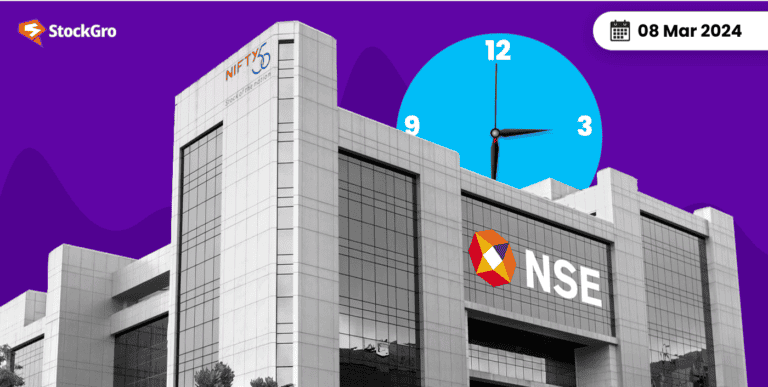
The Indian television industry has gone through a revolution over the last six decades. From black and white box televisions to smart LED televisions, this has transitioned from a luxury to a necessity for most of us.
Today’s article explores the introduction of television in India, the contribution of this industry to the economy and the top brands of the industry.
Also read: From print to digital: The story of India’s media and entertainment sector
History of televisions in India
The number of people who had experienced television in India before 1959 could be counted on the fingers of one hand.
In the early 1950s, the government conducted several programmes and events to showcase the potential of television to Indian citizens. Almost by the end of the decade in 1959, the government began its first television telecasting experiment. However, it was not until 1965 that daily telecasts through Akashvani (All India Radio) began.
Slowly, television services extended to Mumbai and Amritsar, and by 1972, seven cities in the country were equipped with TV services. Doordarshan, the government-owned TV channel, was the only operational one, telecasting music, dance, drama and other forms of art.
Gradually, more and more cities got access to television in India. Colour televisions were introduced in 1982. Mahabharat and Ramayan, the Indian epics, were among the first few serials to be produced and telecasted in Doordarshan.
The government started another channel called DD Metro since Doordarshan’s programming had reached saturation. Prasar Bharati, an autonomous body, was established but failed to succeed in the market.
The growth of the television industry in India
The phenomenal growth of the television industry began with the LPG (Liberalisation, Privatisation, Globalisation) policy in 1991. Post the economic reforms, foreign players like CNN, BBC, etc., entered the broadcasting market, along with new domestic players like Sun TV and Asianet.
By 1995, 70 million homes in India had televisions. The number of audience had reached 400 million, viewing 100 different channels. By 2015, 167 million houses had televisions, of which 84 million were DTH subscribers. The number of houses using digital TV from analog had also grown by 32%. In 2018, India had 850 TV channels and 180 million households with televisions.
India’s growth in the television industry can be seen in different phases based on the change in its broadcasting mode. The first shift was to use digital TVs from analog. The government actively participated in mandating digital services, which gave birth to set-top boxes.
Also read: Karan Johar: The maestro of Indian cinema
Then came satellite televisions, another broadcasting mode. Here, the channels were broadcasted through DTH (Direct-to-Home) Dish. Airtel, Sun Direct, Tata, Videocon, etc., were some of the first few players to provide the dish service to customers.
The next in line was the IPTV (Internet Protocol Television). This is where channels were broadcasted through the internet. IPTV is now ruling the market with its OTT (Over-the-top) service.
Indian television industry today
The media and entertainment industry, of which television is a significant part, is expected to reach $100 billion by 2030.
A recent study by EY on the media and entertainment industry has some interesting revelations about the television industry:
- India’s media and entertainment industry has crossed ₹2.3 trillion, of which television contributed the highest at ₹696 billion (30%).
- While television has remained the highest contributor over the years, digital media is expected to take over next year. 2013, too, saw a decline in television’s contribution, while all other segments grew from the previous year.
- The primary reason for the decline in TV’s market share in India is the dip in advertising revenue. While subscription revenue has increased by 2% in 2023, advertising revenue has fallen by 6.5%. Advertising volume, too, has decreased by 2.6% due to the gaining popularity of other advertising mediums.
- The overall time spent on TV has increased by 2%, however, there is a decrease of 1% in affluent audiences spending time watching TV. The lower-class audiences have compensated for this, with an increase of 4% in their TV time.
- By 2026, the revenue from the television industry is expected to reach ₹765 billion with a CAGR of 3.2%. The total number of TV screens is expected to go up from 182 million in 2023 to 202 million in 2026.
Though there is a slight dip in the TV segment, recent trends, such as the growing popularity of OTT, 4K resolution and LED screens, the use of AI in content creation, connecting other devices through smart technology, etc., are expected to contribute to the growth of this medium.
Top television brands in India
- The top brands selling televisions in India include Samsung, LG, Panasonic, Sony, Xiamoi, Hisense, TCL, Vu, etc.
- The most used OTT applications in India include Netflix, Hotstar, Jio Cinema, MX Player, Sony Liv, Zee 5, Amazon Prime Video, Disney Hotstar, etc.
Following are the top 5 shares of the broadcasting industry listed on NSE and BSE, ranked according to their market capitalisation:
| Company | NSE share price | NSE market cap | BSE share price | BSE market cap |
| Sun TV Network | ₹622.45 | ₹24,529 crore | ₹622.50 | ₹24,531 crore |
| Zee Entertain | ₹160.60 | ₹15,425 crore | ₹160.60 | ₹15,425 crore |
| Network 18 | ₹93.45 | ₹9,783 crore | ₹93.80 | ₹9,820 crore |
| TV18 Broadcast | ₹52.75 | ₹9,043 crore | ₹52.81 | ₹9,053 crore |
| NDTV | ₹246.30 | ₹1,587 crore | ₹246.30 | ₹1,587 crore |
Also read: TV18 Broadcast Ltd.
Bottomline
Despite the growing trends in the media and entertainment industry, television has been one of the most loved mediums of recreation among Indians.
With digital media gaining popularity among today’s youth, television seems slightly behind. But, it is sure to remain in the race for a long time, with smart features, AI and other technologies improving its functionality.

